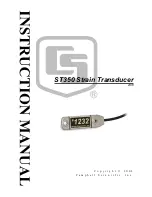
12
After adjustment of the transmitter, it should be kept energized for about 10
seconds to write the adjustment results into memory.
The zero point check or zero adjustment in
fl
ameproof area, is only possible by the outside screw
on the electronics housing without opening the covers of this housing and in case of adjustment
via HHC, the local wiring (connection) is not allowed.
Turn on the power to the transmitter.
Check the output signal of the transmitter by connecting a DC ammeter across CK+ and CK– of
the terminal block.
After ten minutes or longer, adjust the transmitter output current at 4 mA (zero adjustment).
(See below)
START UP AND SHUTDOWN
3
3.1 Installation :
After installation (refer to chapter 6.1) and before start up of the transmitter, be sure to perform
the following checks and procedures.
Preparation :
(1) Check for liquid or gas leakage of the process connection by ap-
plying soapy water or similare.
(2) Check of the electrical connection according to the “Terminal block
connection diagram” shown in chapter 7.1.
(3) Vent the process covers of the transmitter.
Before starting up the transmitter in
fl
ameproof area, please read carre fully
the technical instruction note ATEX Ref.HD FCX AII 002 .
The compatibility of process with the transmitter, has to be checked and ensured by skilled
people from customer side.
(4) Perform zero point adjustment.
Zero point check
Zero adjustment :
Adjustment by zero adjustment screw
Zero adjustment is possible from outside screw on electronic hou-
sing.
Adjust zero point of the transmitter to 4 mA by turning the zero ad-
justment screw.
The higher you turn the screw, the quicker is the change of the
zero.
After all operations are
fi
nished, assemble and tight the covers of the electronics housing.
(Tightening torque: 20 N.m).
When the plant requires chemical cleaning at the start up operation, be
sure to close the isolating valves of the transmitter to avoid that cleaning
liquid or particules are introduced to the transmitter wetted parts.
Decrease
Increase
Fine adjustment : turning slowly
Rough adjustment : turning quickely
INDICATION
DANGER
ATTENTION













































